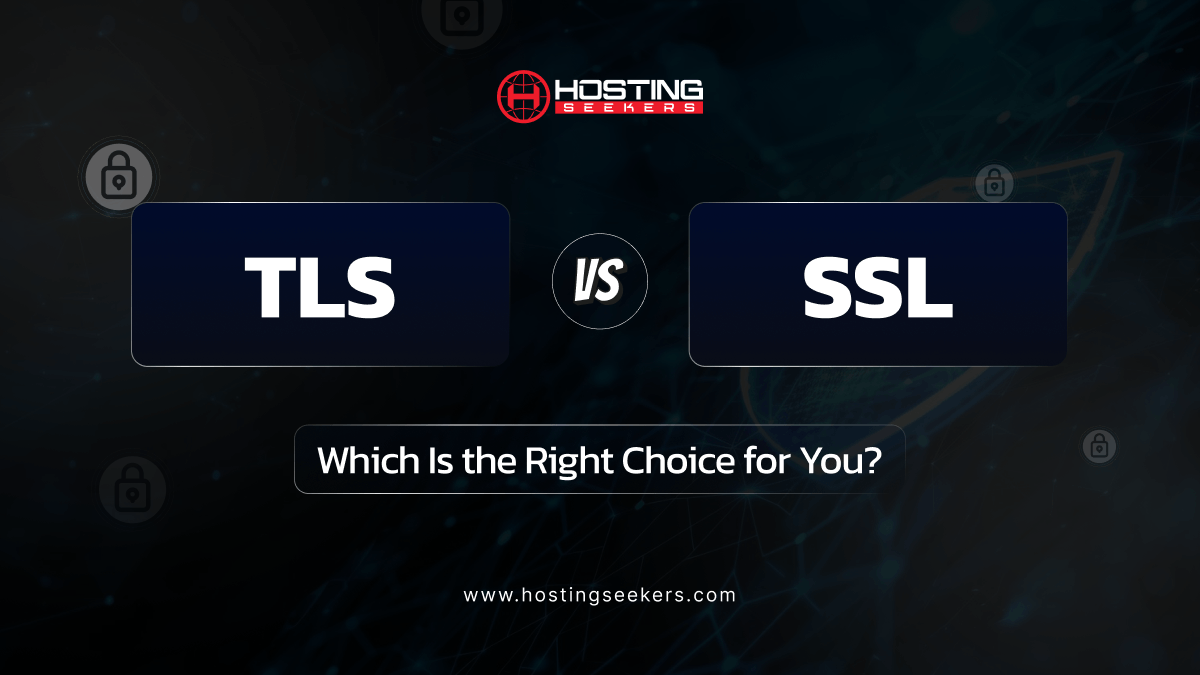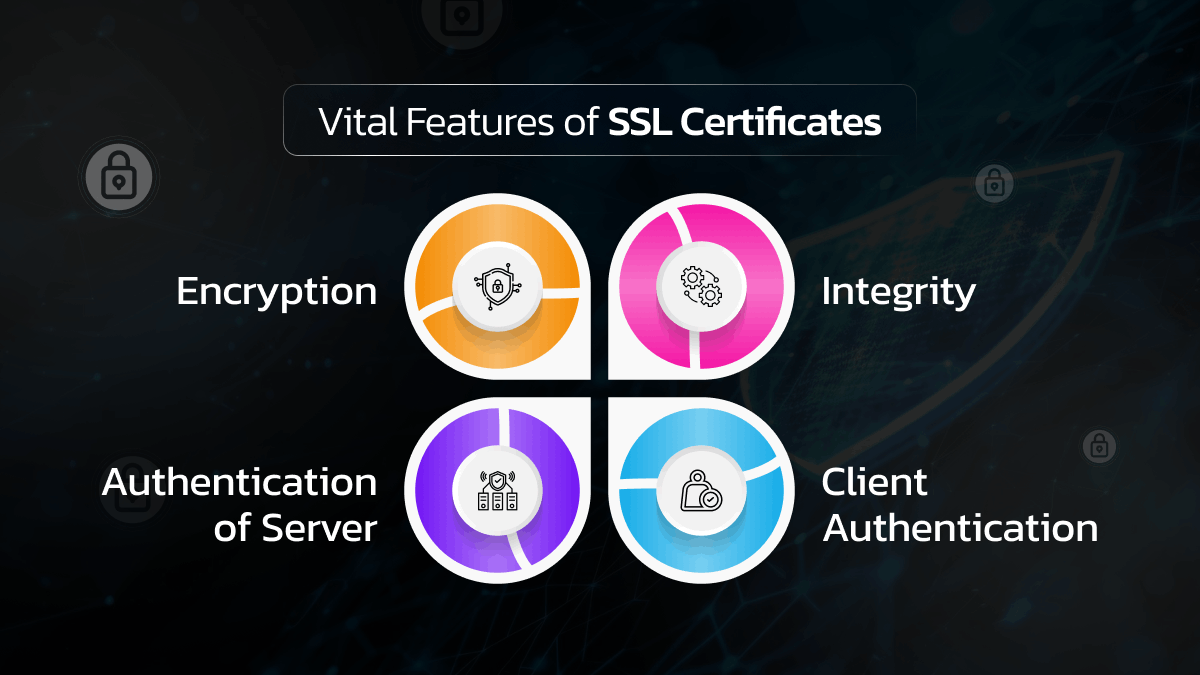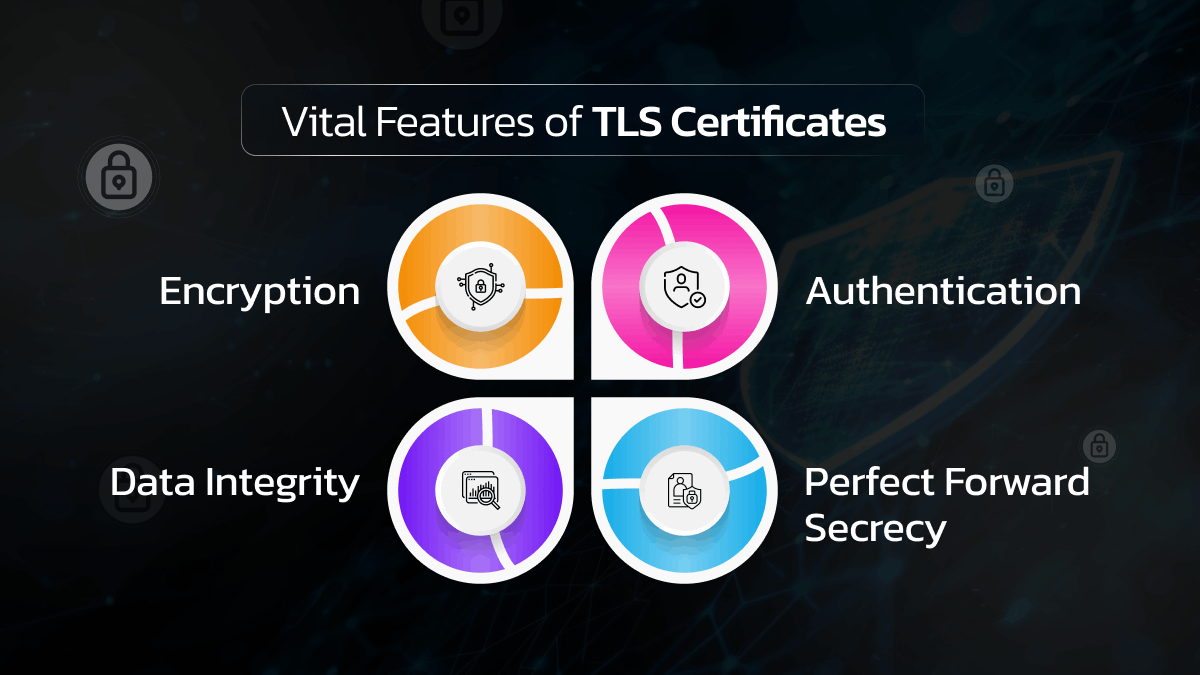

Comparison Security
December 5th 2024
Well SSL is referred to as the secure socket layer while TLS stands for transport layer security. These are the protocols that are utilized to offer security between web browsers and web servers.
So, most businesses often get confused about which security encryption protocols is best for you. This in-depth guide on SSL vs TLS will help you to understand both the protocols deeply and know the importance of why they are vital for keeping your online activities more secure.
What is SSL? (Secure Socket Layer)
Secure Socket Layer is cryptographic protocol that is well developed and designed to offer secure communication over a network. It was developed in the 1990s to allow sensitive information like credit card details and login credentials to be transmitted securely via the internet.
Vital Features of SSL Certificates


1. Encryption
One of the key feature of SSL certificates is data encryption. SSL certificates seamlessly encrypt data in transit utilizing asymmetric and symmetric encryption. Moreover, robust SSL solution utilizes strong encryption algorithms and keys. SHA-2 is widely used to protect from collision attacks. RSA and ECC are also the most used public-key algorithms.
2. Authentication of Server
Server authentication is another most vital feature of SSL. This feature helps and ensures that they are engaging with legal entity. Also, the certificate authority (CA) engages in a validation process before issuing the certificate.
Therefore, if the Domain validity is selected CA checks and verify that the concern entity is owned by the entity or business requesting the certificate.
3. Integrity
Another key feature of SSL is its ability to render data in transit unintelligible to unauthorized entities. Through the use of robust encryption, hashing, and fragmentation techniques, SSL ensures data integrity during transmission. This means that data exchanged between the server and client remains secure, preventing illegitimate entities from reading, altering, or stealing it.
4. Client Authentication
SSL certificates not only authenticate the server but also facilitate the automatic verification of the client’s identity during the SSL handshake through an asymmetric key exchange. Moreover, SSL-enabled servers can be configured to enforce specific client authentication by employing cryptographic validation or requesting a client certificate. This ensures an additional layer of security, affirming the client’s identity and safeguarding sensitive exchanges.
What is TLS? (Transport layer Security)
Transport layer Security (TLS) is built to offer improvised security and efficiency. Also, we can say it is an improvised version of SSL. The first version of TLS 1.0 was mainly based on SSL 3.0 but included significant improvements. Furthermore, TLS continued to evolve with its upgrade’s versions.
Vital Features of TLS Certificates


1. Encryption
TLS encrypts data transmitted between a client like browser and a web server, making sure that sensitive information like passwords and financial data is protected from eavesdropping.
2. Authentication
TLS verifies the identity of communication parties utilizing digital certificates issued by trusted certificate Authorities (CAs). It makes sure that the server is authentic and, in some cases, the client too (mutual authentication).
3. Data Integrity
TLS utilizes cryptographic hash functions to make sure that transmitted data is not tampered with or altered during transit.
4. Perfect Forward Secrecy (PFS)
This perfect forward secrecy makes sure that even if the private key of a server is compromised, past communication sessions remain secure because unique session keys are generated for each session.
Main Similarities Between SSL and TLS
Both SSL and TLS are the communication protocols that encrypt data between applications, servers, users, and systems. They authenticate two parties connected over a network so they can exchange data securely. Let’s check out the main similarities between SSL and TLS.
1. Terminology
TLS is the successor to SSL, and all versions of SSL are now deprecated. However, it’s common to find the term SSL describing a TLS connection. In most cases, the terms SSL and TLS both are referred to as TLS certificates and protocols.
2. Purpose
TLS is a seamless communication protocol that enables encryption and authentication, and this was truth for SSL before it was disparaged. SSL and TLS protocols have certificates that facilitate the handshake process and establish encrypted communication between browser and a web server.
3. HTTPS
HTTPS is a protocol or set of communication rules for client-server communication over any network. It is the practice of developing and establishing a secure SSL/TLS protocol on an insecure HTTP connection.
Before it connects with a website your browser utilizes TLS to check the website’s SSL vs TLS certificate. Also, SSL certificate vs TLS certificate highlights that a web server goes with current security standards.
You can find evidence within the browser address bar with HTTPS:// the S stands for Secure or HTTP.
Comparison Table: SSL vs TLS
SSL |
TLS |
| SSL stands for Secure Socket Layer. | TLS stands for Transport Layered Security. |
| It supports Fortezza algorithms. | It does not support Fortezza Algorithm. |
| SSL is the 3.0 version. | TLS is the 1.0 version. |
| In SSL, the message authentication code protocol is utilized. | In TLS, Hashed Message Authentication Code protocol is used. |
| SSL is more complex than TLS. | TLS (Transport Layered Security) is Simple. |
| SSL is less secured as compared to TLS. | TLS provides high security. |
| SSL is considered to be bit slower. | TLS is highly upgraded. |
Key Differences Between SSL vs TLS
SSL ( Secure Sockets Layer) and TLS (Transport Layer Security) are cryptographic protocols utilized to secure communication over the internet. While TLS is the successor of SSL, they differ in terms of security, features, and implementation. Here are the key differences;
1. Security
SSL: Speaking about SSL vs TLS security, SSL is considered outdated and insecure. As vulnerabilities in SSL 2.0 and 3.0 led to their deprecation.
TLS: TLS is more secure, with stronger encryption algorithms and mechanisms to prevent attacks like POODLE, BEAST, and CRIME. TLS 1.3 eliminates outdated algorithms and offers forward secrecy.
2. Encryption Algorithms
SSL: It uses older encryption algorithms, most of which are now considered weak.
TLS: It supports modern, more secure encryption methods like AES with GCM (Galois/Counter Mode) and ChaCha2.
3. Handshake Process
SSL: The Handshake process for key exchange and authentication is slower and less efficient.
TLS: The handshake in TLS is faster and more secure, especially in TLS 1.3, which decreases the number of round trips required.
4. Backward Compatibility
SSL: No compatibility with TLS, SSL is generally disabled in modern systems.
TLS: It supports backwards compatibility with SSL 3.0, although it is not recommended due to security risks.
5. Performance
SSL: Slower due to outdated encryption methods and handshake inefficiencies.
TLS: Improved performance with Support for session resumption and efficient algorithms.
6. Key Features
SSL: Lacks support for features like secure renegotiation and modern cipher sites.
TLS: It adds features like;
- Secure renegotiation.
- Perfect Forward Secrecy (PFS)
- Robust alert and error-handling mechanisms.
Summing Up
While Secure Socket Layer (SSL) and Transport Layer Security both aim to secure communications over the network TLS is a more modern and secure protocol. The TLS has replaced SSL due to its enhanced security features and performance improvements. Although SSL is still commonly referenced it is recommended to use TLS for secure communications to benefit from the latest advancements in cryptographic technology.
Frequently Asked Question
Q 1. What is the feature of TLS?
Ans. TLS provides secure communication by encrypting data, ensuring data integrity, and authenticating parties in a connection.
Q 2. What is TLS used for?
Ans. TLS is used to secure internet communication, such as web browsing, email, and file transfers, by encrypting data and ensuring its integrity.
Q 3. Does HTTPS use TLS?
Ans. Yes, HTTPS uses TLS to encrypt and secure communication between a web server and a browser.
Q 4. Why is SSL required?
Ans. SSL (or its successor, TLS) is required to protect sensitive data, prevent eavesdropping, and authenticate server identities during online communications.
Q 5. What is the difference between SSL and TLS?
Ans. TLS is the successor to SSL with improved security features, better encryption algorithms, and enhanced performance. SSL is outdated and less secure.

